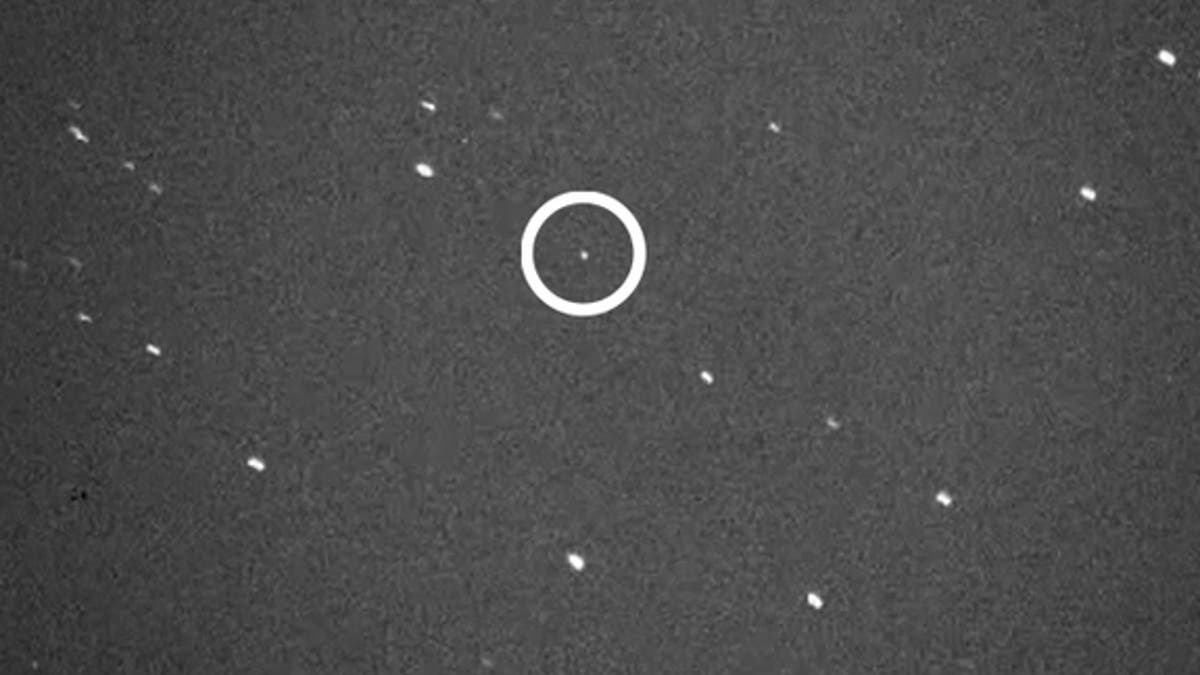
Astrophysicist Giancula Masi of the Virtual Telescope project snapped this image of the near-Earth asteroid 2012 TC4 on Oct. 10, 2012. The asteroid will fly within 59,000 miles of Earth on Oct. 12. (Giancula Masi/Virtual Telescope Project)
An asteroid the size of a house will buzz Earth today (Oct. 12) but poses no risk of hitting our planet, scientists say.
The asteroid 2012 TC4 will pass Earth at a range of just 59,000 miles (95,000 kilometers) —about one-fourth the distance to the moon — when it makes its closest point today, NASA scientists said. The asteroid was discovered by astronomers on Oct. 4 and is about 56 feet (17 meters) across.
"Small asteroid 2012 TC4 will safely pass Earth Oct 12 at just .25 the distance to our moon's orbit," scientists with NASA's Asteroid Watch program wrote in a Twitter update this week. On average, the moon's orbit is about 238,000 miles (383,000 km).
The asteroid is large enough to be seen by backyard astronomers using a small telescope, the night sky events website Spaceweather.com has reported.
Near-Earth flybys of small asteroids like 2012 TC4 pass inside the orbit of the moon fairly often, Asteroid Watch scientists at NASA's Jet Propulsion Laboratory in Pasadena, Calif., explained. On Sunday (Oct. 7), the 100-foot-wide (32-meter) asteroid 2012 TV also passed inside the moon's orbit, missing Earth by about 158,000 miles (255,000 kilometers).
- 5 Reasons to Care About Asteroids
- Smartphone on wheels: Chevy Spark adds apps to driving experience
- Lonely dolphin tries to get frisky with humans off Cayman Islands; experts warn he’s dangerous
- How to Prevent an Asteroid Impact
- Space shuttle Endeavour making 12-mile trip to LA museum
- ‘Jurassic Park’ may be impossible, scientists decide
NASA scientists and astronomers regularly watch the skies for potentially dangerous asteroids that could pose and impact threat to Earth. In fact, by a fluke of timing, a group of asteroid hunters announced Thursday (Oct. 11) that it is on track for a 2017 launch of a private space telescope dedicated to seeking out potentially dangerous space rocks.
Officials with the B16 Foundation said their plan to launch the Sentinel Space Telescope to scan for near-Earth asteroids has passed a major review milestone. The new space telescope is designed to search for asteroids from an observation spot near the orbit of Venus.
In September 2011, NASA announced that its surveys had found about 90 percent of the largest asteroids that could post a threat – space rocks the size of a mountain or bigger.
Asteroid 2012 TC4 is too small to pose a risk to Earth. Past estimates by astronomers said that an asteroid about 460 feet wide (140 meters) would cause widespread damage on the planet.




















